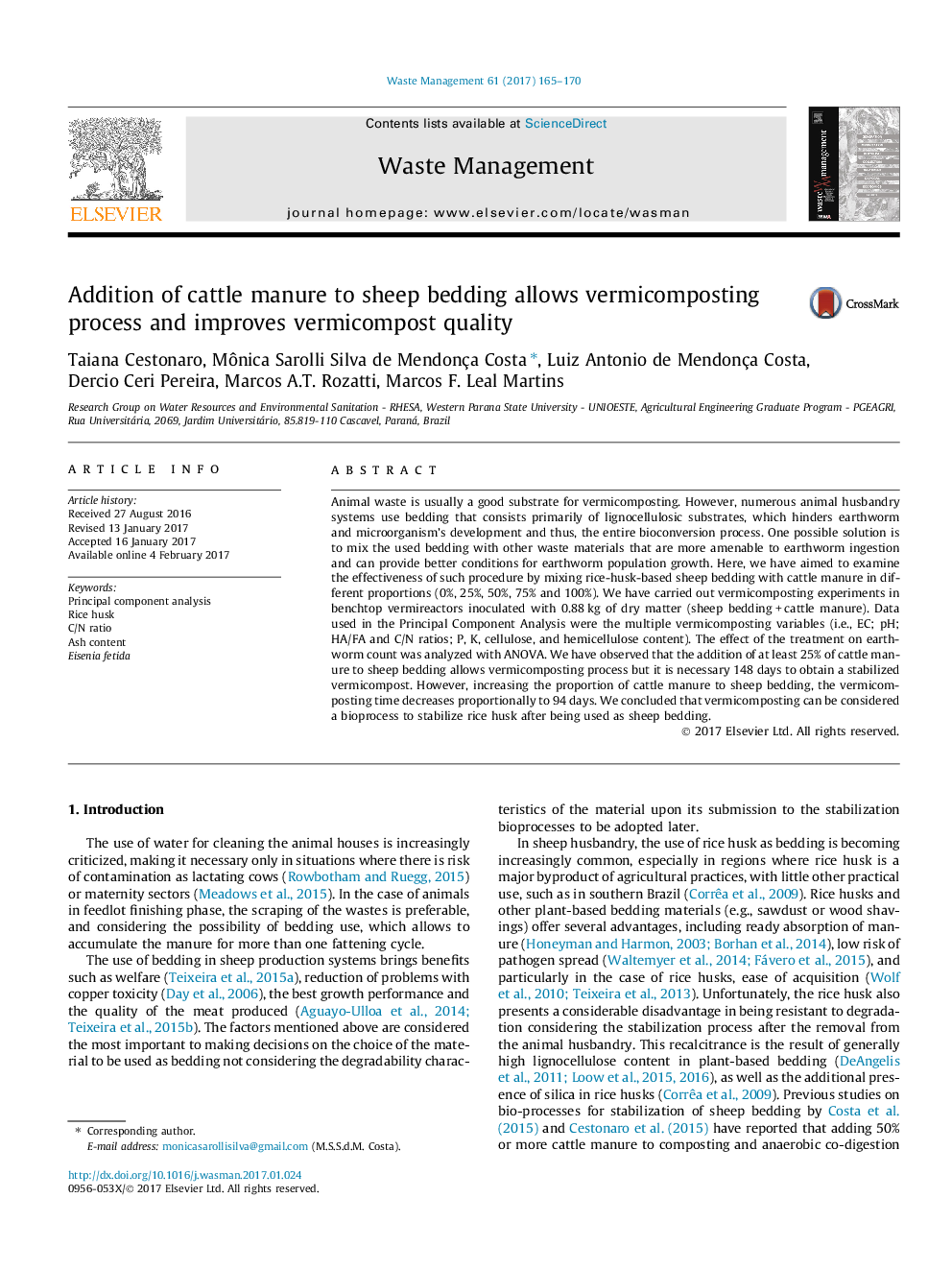| Article ID | Journal | Published Year | Pages | File Type |
|---|---|---|---|---|
| 5756949 | Waste Management | 2017 | 6 Pages |
Abstract
Animal waste is usually a good substrate for vermicomposting. However, numerous animal husbandry systems use bedding that consists primarily of lignocellulosic substrates, which hinders earthworm and microorganism's development and thus, the entire bioconversion process. One possible solution is to mix the used bedding with other waste materials that are more amenable to earthworm ingestion and can provide better conditions for earthworm population growth. Here, we have aimed to examine the effectiveness of such procedure by mixing rice-husk-based sheep bedding with cattle manure in different proportions (0%, 25%, 50%, 75% and 100%). We have carried out vermicomposting experiments in benchtop vermireactors inoculated with 0.88 kg of dry matter (sheep bedding + cattle manure). Data used in the Principal Component Analysis were the multiple vermicomposting variables (i.e., EC; pH; HA/FA and C/N ratios; P, K, cellulose, and hemicellulose content). The effect of the treatment on earthworm count was analyzed with ANOVA. We have observed that the addition of at least 25% of cattle manure to sheep bedding allows vermicomposting process but it is necessary 148 days to obtain a stabilized vermicompost. However, increasing the proportion of cattle manure to sheep bedding, the vermicomposting time decreases proportionally to 94 days. We concluded that vermicomposting can be considered a bioprocess to stabilize rice husk after being used as sheep bedding.
Related Topics
Physical Sciences and Engineering
Earth and Planetary Sciences
Geotechnical Engineering and Engineering Geology
Authors
Taiana Cestonaro, Mônica Sarolli Silva de Mendonça Costa, Luiz Antonio de Mendonça Costa, Dercio Ceri Pereira, Marcos A.T. Rozatti, Marcos F. Leal Martins,
